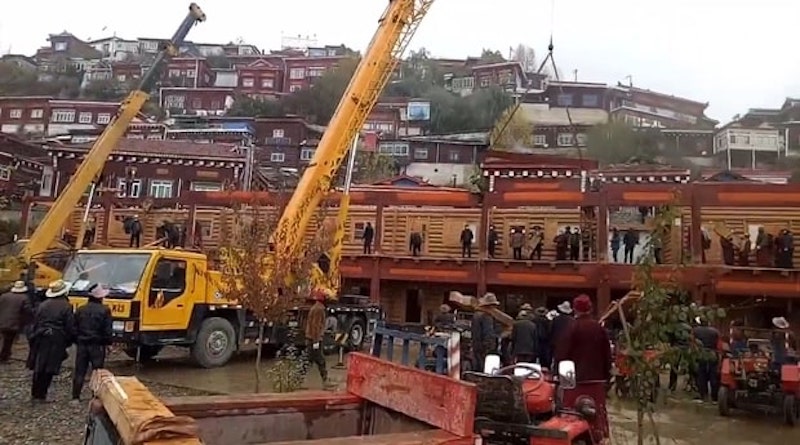By Choekyi Lhamo
DHARAMSHALA, Nov. 6: The Chinese authorities have reportedly forced Tibetan school officials to hastily demolish a school attached to Drago monastery in Kardze prefecture in China’s so-called Sichuan province last month. The officials had accused the temple of violating state laws on land use, a source based in India told RFA Tibetan service.
The school was given three days’ notice for the demolition to start. The Gaden Rabten Namgyaling, a school administered by Drago monastery, was ordered by local Chinese authorities to demolish the school building in numbered days or else, a government team would “destroy the building and confiscate school property including the building materials.” As a result, school officials and volunteers hastily obeyed the order and took down the school attached to the monastery.
Along with the shared video of the demolition, the source Kalsang Norbu confirmed that this order came late last month. The officials targeted the learning centre as it guaranteed education in Tibetan culture and religion for local Tibetan students. “The land law covers only local residential buildings,” Norbu said, adding the demolition was improper. Due to tight restrictions on sharing information from Tibet, the India-based source was unable to find the eventual fate of the students, including whether they were forced to leave the Drago region or not.
The demolished Gaden Rabten Namgyaling School was run by the monastery and was further refurbished between 2014 and 2018. According to the report, the CCP government expelled over 20 monks under the age of 18 during those four years. The Chinese policies have long sought restrictions over the influence of Tibetan Buddhism and have been targeting monasteries, which are assumed to have the potential to revive Tibetan national and cultural identity.










